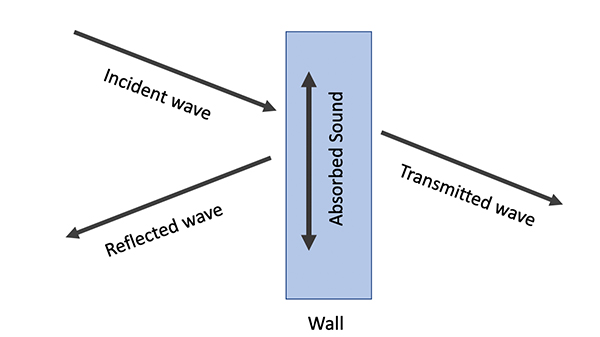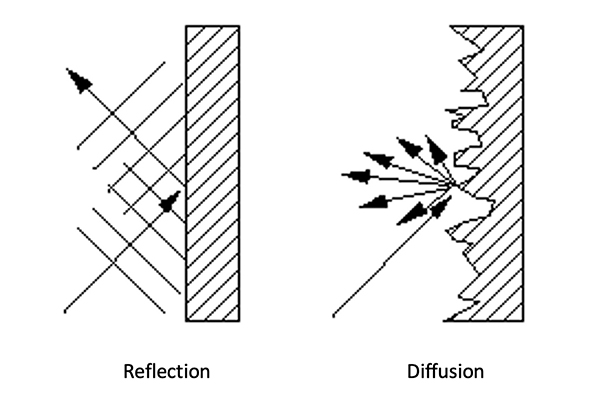Acoustic and Audio System Design for Small Rooms – Part 3
By - Rahul Sarma, CEO, Menura Acoustic Labs In collaboration with Sound Wizard

In Part 2 of the series, we spoke about the importance of sound isolation and how background noise can adversely impact the dynamic range of the audio playback. In Part 3 of the series…
We dive deeper into “small room” design, as we can now start to look closer at the science behind absorption and diffusion and how to effectively use both to achieve your desired targets for a particular space. For those of you who have a working knowledge of acoustics, this portion of the series will only be a refresher, but hopefully will still give you a more practical insight into the topic.
Overview
Familiarize yourself with the frequency content of various sound sources. This knowledge is vital to manage any expectations during the design phase of any project. Relate every frequency to its corresponding wavelength, and the picture starts to become clear.

As you read further, you will be able to understand the range of frequencies that you can absorb/block and therefore the type of sound sources you can plan to accommodate in (or block from entering) a space.
Let us first look at what happens to an incident sound wave on a surface. The ability to understand this interaction will help you identify and understand acoustical issues in any space. It helps to visualize an incident source on a surface as multiple waves, each wave representing a different frequency in its spectrum. Each frequency treats the surface it encounters differently because of its wavelength. Some frequencies will be absorbed or reflected, and frequencies with larger wavelengths will pass through some barriers as if they don’t exist. Understanding the frequency dependent behaviour of materials is vital to small room design, especially because not all materials perform in the way that you expect.

Fig.1: Interaction between wave and barrier
Glass is a perfect example of a material that is often misunderstood and hence misused. Being a hard and non-porous surface, one is perfectly within their rights to think of it as a reflective surface that can be detrimental to good room acoustics. However, it will only reflect down to a certain frequency, which is determined by the thickness of the glass. Below that frequency, sound will pass through the glass, essentially making it as effective as a bass trap! Unless sound leakage is a huge concern (which it often is) allowing low frequency energy to escape from a room is the easiest and most cost-effective way to deal with reverberation below 100Hz. It is often a good idea to use neighbouring spaces like equipment rooms or passageways to allow low frequency energy to escape, since it will lower the amount of absorption required in a space.
Porous Absorbers
Porous absorbers are the most commonly used type of absorber, mainly due to their predictable behaviour. Any porous material converts the mechanical energy of sound waves into heat through friction. The efficiency of the absorption is related to the flow resistivity of a material, but the range of frequencies absorbed is dependent on the depth or thickness of that material. The thickness of an absorber has to be at least a quarter of the wavelength of a frequency it intends to absorb effectively. If you were hoping for your plush 1inch thick carpet to improve the acoustic absorption of a space, you will be disappointed to know that its peak absorption is at 3.4kHz! This often ends up doing more harm than good in a small room, where over-absorption at high frequencies results in a space that appears “dead” while offering no control over troublesome lower frequencies. To put things in perspective, the wavelength of a 50Hz wave is almost 7 meters, and hence a porous absorber will need to be over 1.5m deep to effectively absorb it. This is expensive and impractical, and clearly demonstrates why porous absorbers are only effective at absorbing mid and high frequencies.
Diaphragmatic Absorbers
Diaphragmatic absorbers are the most effective solution to low frequency absorption in small rooms. When allowing these frequencies to leak out of a space is not an option, diaphragmatic absorbers provide a space-saving and efficient method of controlling reverberation below 100 Hz. Having spent the last few years testing and developing these devices for Menura Acoustic Labs, I can personally attest to their effectiveness. They work by mechanically dissipating sound energy using a weighted membrane stretched over a box whose volume has an effect on the range of frequencies absorbed. When used in combination with porous absorbers, an acoustic designer can use diaphragmatic absorbers to achieve broadband absorption in a space. When attempting to determine the amount of low frequency absorption in a ‘small room’, a good rule of thumb is that no amount is enough! The only limiting factors are cost and space, and diaphragmatic absorbers help alleviate both issues.
Resonators
Some rooms have issues at specific frequencies, and specialized solutions are required to address these problems. An absorber with a wider band of absorption will throw off the acoustical balance of your space, and this is where resonators can be the most effective solution. Ever tried driving on a highway at a decent speed, and someone in your car lowers their window just a little bit? A weird phenomenon occurs, an extremely distracting low frequency throbbing that makes your eardrums vibrate, best described as ‘buffeting’. This is Helmholtz resonance in a nutshell, a fixed volume of air in a cavity (with a small exit) that absorbs sound at a resonant frequency determined by the volume of the cavity and the size of the exit. If you lower a second window, the ‘buffeting’ stops, since the opening is now large in relation to the cavity. Resonance theory is also commonly applied to extend the absorption range of other types of absorbers.
Diffusers
Depending on the application, it is often important to preserve some high frequency reverberation in a space for it to sound as natural as possible. Diffusion (scattering) is the best way to achieve this while also taking care of harmful reflections in a space. Diffusers scatter and dissipate incident waves without removing their energy, preventing the listener from localizing reflected waves and psycho-acoustically creating a perception of being in a larger space.

Fig.2: Reflection vs Diffusion
They are a good solution to the issues of comb-filtering that were introduced in part one of this series. As with most acoustic phenomena, it is often misunderstood and misused based on myths propagated by audio enthusiasts. Egg crates do not work as diffusers for multiple reasons; their symmetric design is conducive to diffusion only at one frequency, and their shallow depth mean that they will only diffuse the highest of frequencies. The depth and size of protruding shapes in a diffusor determine the frequencies that it can absorb. All commercially available products are highly asymmetrical so that they randomly scatter incident waves, which is ultimately the goal of a good diffuser.
Practical Application
Armed with this theory, you now have to use these principles to maximize the acoustic performance of your space. Start by determining the optimum reverberation time for your space, which is easy enough to find online. Avoid single number averages and use a reference curve from Dolby (or anyone else) especially for critical listening and recording spaces. Visualize the interaction between different frequencies and the surfaces in your space, and plan accordingly to achieve your desired reverberation time curve, which needs to be relatively flat across the audible spectrum to achieve a transparent listening experience. Diffuse to prevent over-absorption in the high frequencies, absorb the mids with porous absorbers, and extend low frequency absorption with the help of diaphragmatic and resonant absorbers. If possible, also allow low frequencies to escape from a space into a nearby corridor or equipment room; this is the easiest way to tame unruly room modes.